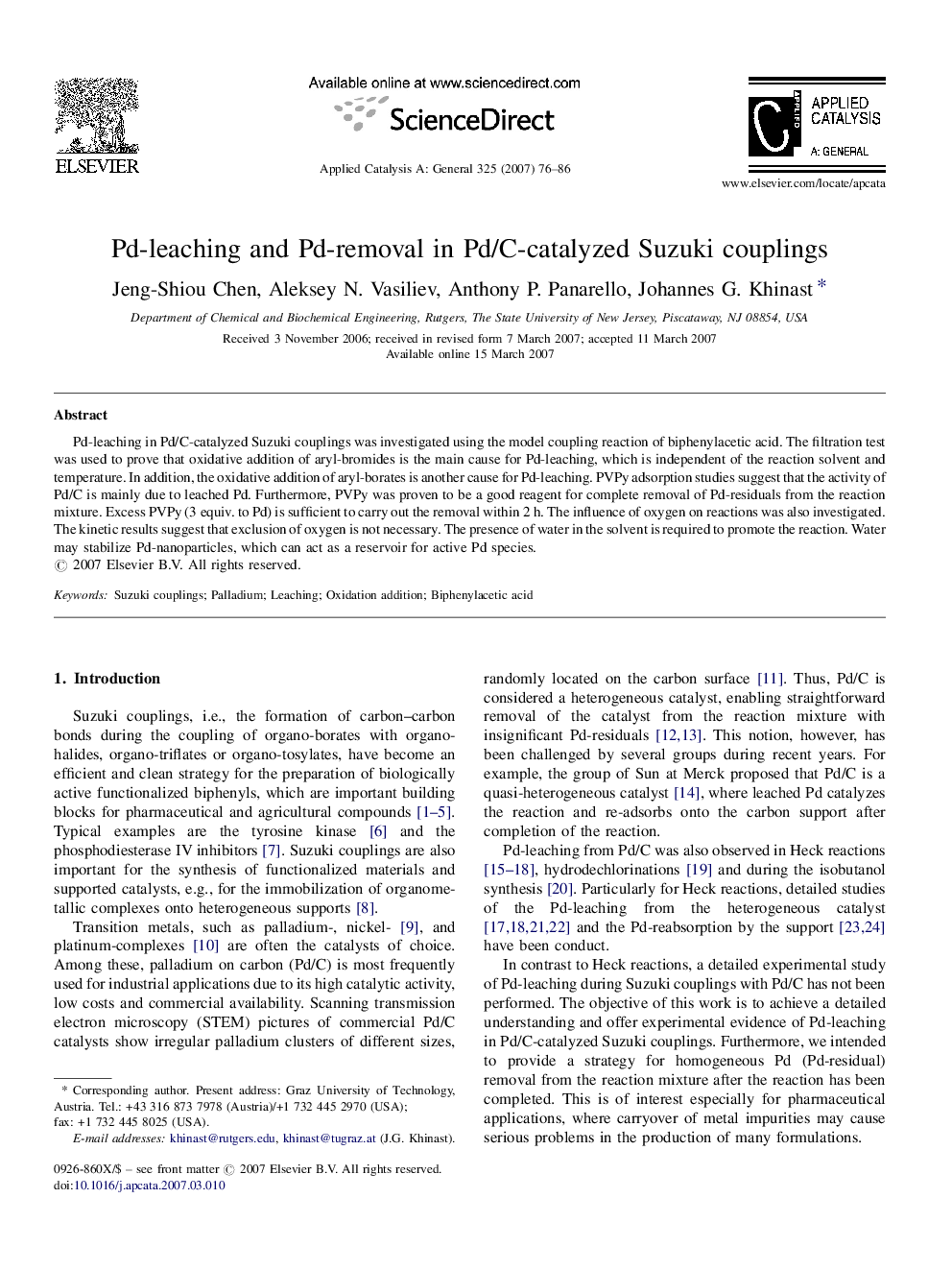| Article ID | Journal | Published Year | Pages | File Type |
|---|---|---|---|---|
| 43587 | Applied Catalysis A: General | 2007 | 11 Pages |
Pd-leaching in Pd/C-catalyzed Suzuki couplings was investigated using the model coupling reaction of biphenylacetic acid. The filtration test was used to prove that oxidative addition of aryl-bromides is the main cause for Pd-leaching, which is independent of the reaction solvent and temperature. In addition, the oxidative addition of aryl-borates is another cause for Pd-leaching. PVPy adsorption studies suggest that the activity of Pd/C is mainly due to leached Pd. Furthermore, PVPy was proven to be a good reagent for complete removal of Pd-residuals from the reaction mixture. Excess PVPy (3 equiv. to Pd) is sufficient to carry out the removal within 2 h. The influence of oxygen on reactions was also investigated. The kinetic results suggest that exclusion of oxygen is not necessary. The presence of water in the solvent is required to promote the reaction. Water may stabilize Pd-nanoparticles, which can act as a reservoir for active Pd species.
Graphical abstractPd-leaching in Pd/C-catalyzed Suzuki couplings was investigated using the model coupling reaction of biphenylacetic acid (Scheme 1). The filtration test proves that oxidative addition in the catalytic cycle is the main cause for Pd-leaching, which is independent of the reaction solvent and temperature. PVPy adsorption studies suggest that the activity of Pd/C is mainly due to leached Pd. Furthermore, PVPy was proven to be a good reagent to completely remove Pd-residuals from the reaction mixture. Excess PVPy (3 equiv. to Pd) is sufficient to carry out the removal within 2 h. Lastly, the kinetic studies suggest that exclusion of oxygen is not necessary.Figure optionsDownload full-size imageDownload as PowerPoint slide
